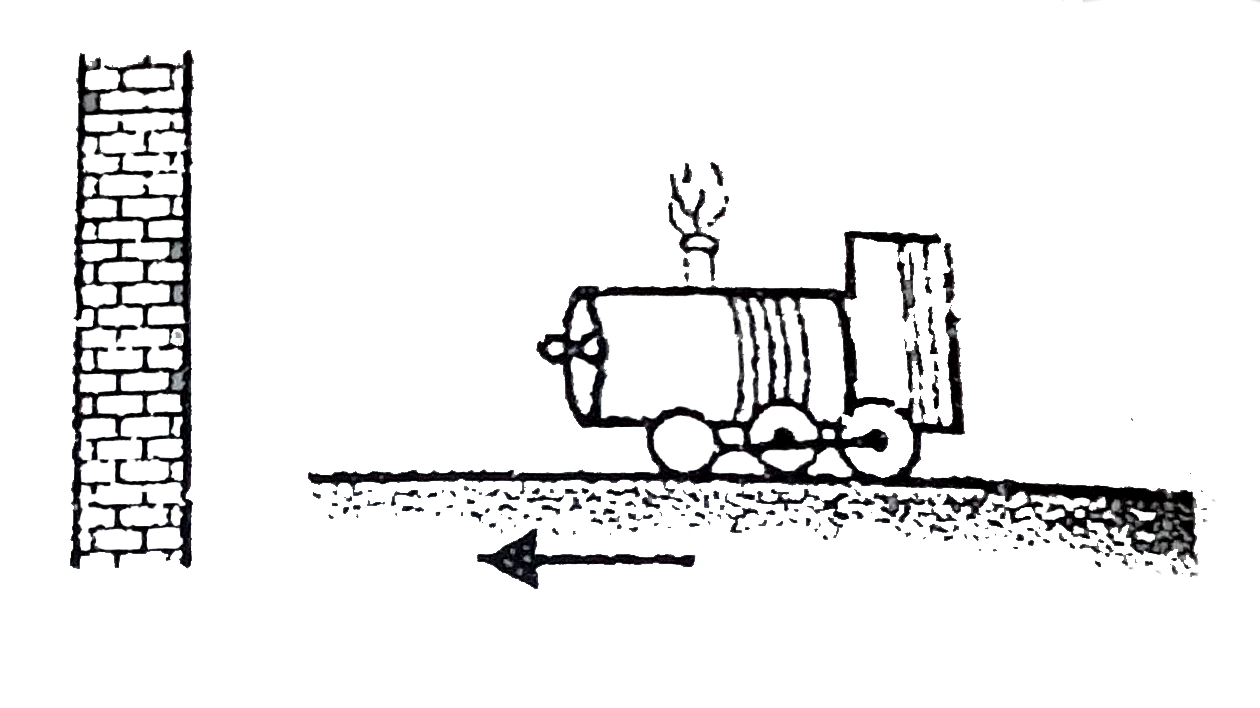The driver of a bus approaching a big wall botices that the frequency of his bus's horn changes from 420 Hz to 490 Hz when he hears it after it gets reflected from the wall. Find the speed of the bus if speed of the sound is 330 ms−1.
71 kmh−1
91 kmh−1
61 kmh−1
81 kmh−1
To solve the problem of the bus driver noticing a change in frequency of the bus's horn as it approaches a wall, we can use the Doppler effect. Here's a step-by-step solution:
Step 1: Understand the Doppler Effect
The Doppler effect describes the change in frequency of a wave in relation to an observer moving relative to the source of the wave. In this case, the bus is the source of the sound, and the wall acts as a stationary observer.
Step 2: Identify Given Values
- Frequency of the horn when produced by the bus, f=420Hz
- Frequency of the horn when reflected from the wall and heard by the driver, f′=490Hz
- Speed of sound, v=330m/s
Step 3: Calculate the Frequency Received by the Wall
When the bus approaches the wall, the frequency f1 received by the wall can be calculated using the formula for the Doppler effect:
f1=f⋅vv−V
where V is the speed of the bus.
Substituting the values:
f1=420⋅330330−V
Step 4: Calculate the Frequency Heard by the Bus
The wall reflects the sound back to the bus. The frequency f′ heard by the bus is given by:
f′=f1⋅v+Vv
Substituting f1:
f′=(420⋅330330−V)⋅330+V330
Step 5: Set Up the Equation
Now, we know f′=490Hz. Therefore, we can set up the equation:
490=420⋅330330−V⋅330+V330
Step 6: Simplify the Equation
1. Cancel 330 from both sides:
490=420⋅330+V330−V
2. Rearranging gives:
490420=330+V330−V
3. Simplifying 490420=76:
76=330+V330−V
Step 7: Cross Multiply
Cross multiplying gives:
7(330−V)=6(330+V)
Expanding both sides:
2310−7V=1980+6V
Step 8: Solve for V
1. Combine like terms:
2310−1980=7V+6V
330=13V
2. Solve for V:
V=33013≈25.38m/s
Step 9: Convert to km/h
To convert V from m/s to km/h:
Vkm/h=V⋅185=25.38⋅185≈91.38km/h
Final Answer
The speed of the bus is approximately 91km/h.
---
The Doppler effect describes the change in frequency of a wave in relation to an observer moving relative to the source of the wave. In this case, the bus is the source of the sound, and the wall acts as a stationary observer.
- Frequency of the horn when produced by the bus, f=420Hz
- Frequency of the horn when reflected from the wall and heard by the driver, f′=490Hz
- Speed of sound, v=330m/s
When the bus approaches the wall, the frequency f1 received by the wall can be calculated using the formula for the Doppler effect:
f1=f⋅vv−V
where V is the speed of the bus.
f1=420⋅330330−V
The wall reflects the sound back to the bus. The frequency f′ heard by the bus is given by:
f′=f1⋅v+Vv
Substituting f1:
f′=(420⋅330330−V)⋅330+V330
Now, we know f′=490Hz. Therefore, we can set up the equation:
490=420⋅330330−V⋅330+V330
1. Cancel 330 from both sides:
490=420⋅330+V330−V
2. Rearranging gives:
490420=330+V330−V
3. Simplifying 490420=76:
76=330+V330−V
Cross multiplying gives:
7(330−V)=6(330+V)
Expanding both sides:
2310−7V=1980+6V
1. Combine like terms:
2310−1980=7V+6V
330=13V
2. Solve for V:
V=33013≈25.38m/s
To convert V from m/s to km/h:
Vkm/h=V⋅185=25.38⋅185≈91.38km/h
The speed of the bus is approximately 91km/h.
Topper's Solved these Questions
Similar Questions
The driver of as car approaching a vertical wall notices that the frequency of his car's horn charges from 440 Hz to 480 Hz when it gets reflected from the wal. Find the speed of the car if that of the sound is 330ms−1.
View SolutionA driver in a car , approaching a vertical wall notices that the frequency of his car horn , has changed form 440 Hz to 480 Hz , when it gets reflected form the wall . If the speed of the sound in are 345 m/s , then the speed of the car is :
View Solution
Knowledge Check
The driver of a car approaching a vertical wall notices that the frequency of the horn of his car changes from 400 Hz to 450 Hz after being reflected from the wall. Assuming speed of sound to be 340ms, the speed of approach of car towards the wall is
A10msB20msC30msD40msAn engine driver moving towards a wall with velocity of 50ms−1 emits a note of frequnecy 1.2kHz. The frequency of note after reflection from the wall as heard by the engine driver when speed of sound in air is 350ms−1 is :
 A1kHzB1.8kHzC1.6kHzD1.2kHz
A1kHzB1.8kHzC1.6kHzD1.2kHzAn engine driver moving towards a wall with velocity of 50ms−1 emits a note of frequency 1.2kHz. The frequency of note after reflection from the wall is heard by the engine driver when speed of sound in air is 350ms−1 is
 A1kHzB1.8kHzC1.6kHzD1.2kHz
A1kHzB1.8kHzC1.6kHzD1.2kHz
The frequency of a car horn encountered a change from 400 Hz to 500 Hz. When the car approaches a vertical wall. If the speed of sound is 330 m/s. Then the speed of car is ______ km/h.
View SolutionCalculate the apparent frequency of the horn of a car approaching a stationary listener with a velocity of 12ms−1. The frequency of horn is 500 Hz.The speed of sound is 332ms−1.
View SolutionA motor car is approaching towards a crossing with a velocity of 75kmh−1.The frequency of sound of its horn as heard by a policeman standing on the crossing is 260 Hz.What is the real frequency of the horn ? Speed of sound =332ms−1.
View SolutionAn engine driver moving towards a wall with velocity of 50ms−1 emits a note of frequnecy 1.2kHz. The frequency of note after reflection from the wall as heard by the engine driver when speed of sound in air is 350ms−1 is :

View SolutionA siren emitting a sound of frequency 800 Hz moves away from an observer towards a cliff at a speed of 15ms−1. Then the frequency of sound that the observer hears in the echo reflected from the cliff is (Take velocity of sound in air =330ms−1)
View Solution
